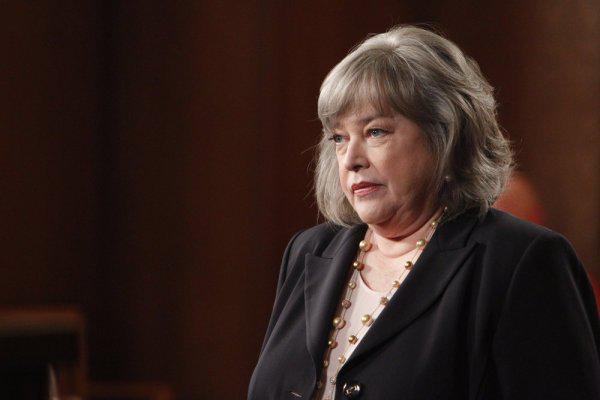When it appeared as a mid-season replacement show in January 2011, Harry’s Law was an odd hybrid. In many ways, the NBC series was a standard David E. Kelley legal procedural—quirky lawyers, a ditsy receptionist, an odd setting (the office doubled as a shoe store). But it was also a virtually unique television entertainment: It concerned itself with the problems of poor people.
The Harry of the title was Harriet Korn (Kathy Bates), an attorney in her early 60s who lost interest in patent law and was fired from her cushy job at a white-shoe firm. After a series of incidents too ridiculous to recount (it’s a minor miracle the show survived its dreadful pilot), Harry found herself in a store-front law-office-cum-footwear-emporium in inner-city Cincinnati. Her clients were poor and African-American and nearly every episode included a soapbox speech about the many ways the educational, medical, and legal establishments had failed the residents of the ’hood. Harry and Adam, her junior associate, defended gang members, impoverished octogenarians, obese fast-food addicts, and disturbed war veterans. Most of the cases were a little silly, but, as I wrote back in March, even if it was “hokey and predictable, it’s still refreshing to see a prime-time show that focuses on the problems of America’s poor.”
Then a funny thing happened. Although critics hated Harry’s Law, it caught on with viewers—indeed, it was NBC’s highest-rated show, and got renewed for a second season. When it returned, however, all that remained the same was the name and a few core actors. The street-level shoe store was ditched for a swank loft setting, and the African-American staffers disappeared. In fact, almost all the black faces vanished: This season’s clients have been a roster of wealthy or solidly middle-class white folks.
Creatively, this upward mobility seems like a huge mistake. The only reason the show stood out was that it wasn’t peddling the same old stories. This year it’s a parade of standard procedural mush. Dumping the people of color hasn’t killed the show in the ratings—though it does abysmally in the key 18-49 demographic—but, given last season’s success, surely it wasn’t necessary. If television dramas won’t portray poor people in a period of mass unemployment and economic uncertainty, when will the right moment come?
